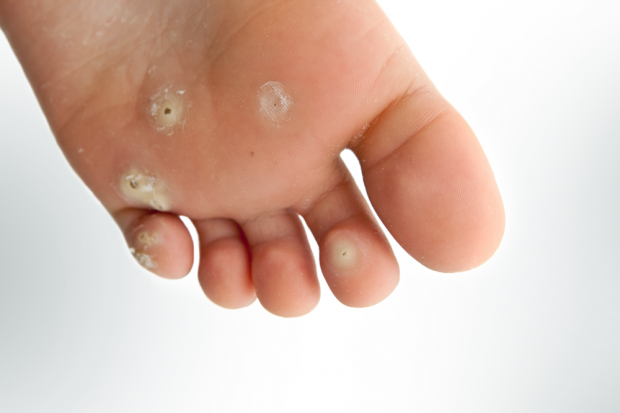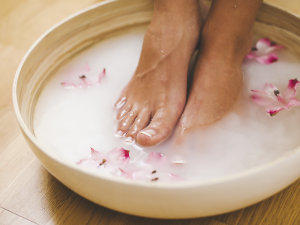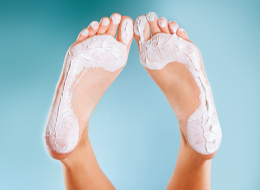Home Remedies The Most Effective Ways to Rid Your Feet of Corns
Forget about Children of the Corn: The corns that grow on your feet are much more horrific. Fortunately, there are several home remedies to help you get rid of the unsightly and painful bumps that can invade your feet and toes.
The human body may be vulnerable, but it does some pretty miraculous things to shield itself from pain and injury. Take calluses and corns, for example. The tough and hardened bumps are actually your foot’s way of protecting itself from stress and repeated friction caused by things like shoes and physical activity. Basically, as the friction continues, your body responds by building up a protective layer of dead skin that forms into a callus, which can then later turn into a corn (a callus with a hard center or core). Corns are generally harmless and painless, but they can become painful if they are located on a toe or if they continue to grow and begin to irritate the surrounding bone and nerves. They can also lead to more serious foot ailments like bunions. Fortunately, there are several home remedies that can help you rid your feet of corns.
Pumice Stone
The most common way of removing corns is by using a pumice stone to gently exfoliate the affected skin. Start by soaking the your feet in warm water for 10 minutes or until the corns begin to soften. Gently rub the pumice stone on the bumps, being sure to clean the stone periodically while scrubbing. It is important to not scrub the corns too hard, as taking off too many layers of skin can be painful. Follow up the pumice stone scrub by thoroughly rinsing the skin and using a good quality moisturizer. For increased effectiveness, try adding a handful of Epsom salt or baking soda to the warm water bath. Both act as natural exfoliates to help remove the dead skin.
Castor or Turpentine Oil
Using castor oil and turpentine oil on corns is a quick and easy age-old remedy. Simply start with a soothing 15-minute foot soak in a mixture of warm water and a cup of apple cider vinegar. Then follow up by dabbing castor oil or turpentine oil on the corns. Repeat nightly until the corns peel away, which should be in about 10 to 14 days.
Bread
It may not be great for the waistline, but bread has been said to work wonders on corns. In fact, bread could get rid of your corn overnight. Simply soak a small piece of bread in apple cider vinegar and secure it to the affected area with a bandage or adhesive tape. Follow up by wrapping that part of your foot with plastic cling wrap and wearing a cotton sock.
Vitamin E or A
Vitamin E and A have significant healing effects on all kinds of skin issues, corns being one of them. The best way to use vitamin E or vitamin A to get rid of a corn is by carefully pricking a vitamin E or A capsule with a needle or sharp knife and then rubbing the oil into the corn. Cover with a bandage or a cotton sock and leave on overnight. Repeat until the corn is gone, which should be in about 10 to 14 days.
Aspirin
This is quite an aggressive treatment that will help you get rid of a corn almost immediately. Crush six uncoated aspirin tablets with a small amount of apple cider vinegar until a thick paste forms. Rub the paste onto your corn and cover with a bandage for about 10 minutes. Upon removing the bandage, you should see that the corn is broken down enough to gently rub away with a pumice stone.
Additional Things To Keep In Mind During Corn Removal
In addition to the above methods, people with corns should moisturize their feet on a regular basis. Dry skin increases the discomfort of corns, and the small bumps can only be removed when the skin is kept soft and moistened at all times. It is also a good idea to wear comfortable shoes and cotton socks when possible.
If your corns worsen or continue to cause you discomfort after trying these home remedies, you should visit a health clinic or see your podiatrist. In addition, if you have diseases that affect your circulation (such as diabetes), do not attempt to self-treat any foot problem at home. Always see a podiatrist, no matter how insignificant the problem might seem.
Notice concerning medical entries:
Articles having medical content shall serve exclusively for the purpose of general information. Such articles are not suitable for any (self-) diagnosis and treatment of individual illnesses and medical indications. In particular, they cannot substitute for the examination, advice, or treatment by a licensed physician or pharmacist. No replies to any individual questions shall be effected through the articles.







